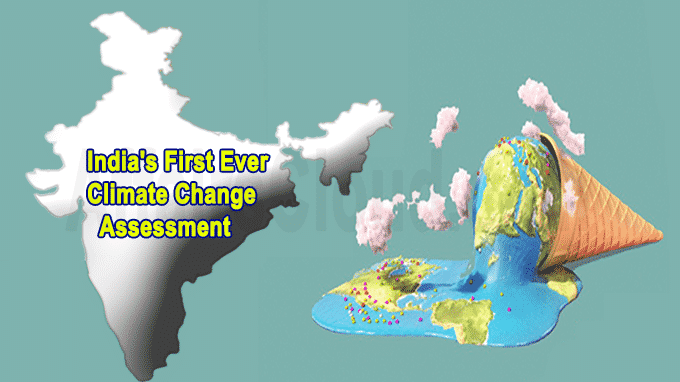 On 19th June 2020, India released its first national report on the state of the climate crisis titled “Assessment of climate change over the Indian region” prepared with the support of the Ministry of Earth Science(MoES) and edited by the scientists of the Indian Institute of Tropical Meteorology(IITM), Pune.
On 19th June 2020, India released its first national report on the state of the climate crisis titled “Assessment of climate change over the Indian region” prepared with the support of the Ministry of Earth Science(MoES) and edited by the scientists of the Indian Institute of Tropical Meteorology(IITM), Pune.
Note: This report is published as an open access book by Spring Nature.
Projections of the Report:
i.The average temperature of India has raised by 0.7 degree celsius in 1901 – 2018 due to the emission of greenhouse gases(GHG) and projected to rise by 2.7 degree celsius by 2099 in the best case scenario and in the worst case scenario a rise will be 4.4 degree celsius.
ii.The findings of the report states that the sea level in Mumbai and Bengal coast are rising at a rate of 3 cm and 5 cm per decade respectively which is projected to rise to 30 cm by 2099.
iii.The temperature of the Indian ocean including the Arabian Sea and Bay of Bengal has risen by 1 degree celsius in 1951-2015 which is higher than the global average.
iv.The temperature of the warmest day and the coldest night have risen by 0.63 degree celsius and 0.4 degree celsius between 1986-2015 which is projected to rise by 4.7degree celsius and 5.5degree celsius respectively in the business as usual(BAU) condition.
Note – BAU conditions refer to a scenario where either no action is taken or very little is done to reduce emission of GHG.
v.The summer monsoon has declined by 6% in the western ghats and indo-gangetic plains and it is projected that this will result in drought and extreme rainfall.
vi. The mean surface air temperature can rise anywhere between 1.39 and 2.70 degrees Celsius during two epochs — 2040 – 2069 and 2070 – 2099,” stated the report. The annual mean and maximum temperatures was noted to have jumped by 0.15 degrees Celsius, whereas the minimum temperatures soared by 0.13 degrees Celsius, between 1951 and 2015.
vii.There will be more frequent dry spells (27 percent higher during 1981–2011, relative to 1951–1980) and more intense wet spells during the summer monsoon season.
Key Points:
i.The clear assessment on the possibilities of the future climatic change will provide insights to policy makers, researchers, social scientists, economists and students.
ii.The report reveals the local climate change, increase in air pollution, change in land use pattern and warns about the increasing stress of climatic change on the ecosystem, freshwater resources and agricultural outputs.
iii.Unlike the United Nations Intergovernmental Panel on Climate Change(IPCC) reports this focus on regional climate change projections based on the IITM Earth System Model and Coordinated Regional Climate Downscaling Experiment datasets.
Editors:
Dr. R. Krishnan, Dr. J. Sanjay, Dr. C. Gnanaseelan, Dr. Milind Mujumdar, Dr. Ashwini Kulkarni and Dr. Supriyo Chakraborty from IITM.
About IITM:
Director– Prof. Ravi Shankar Nanjundiah
Location– Pune, Maharashtra
About MoES:
Minister– Harsh Vardhan
Secretary– M.Rajeevan




